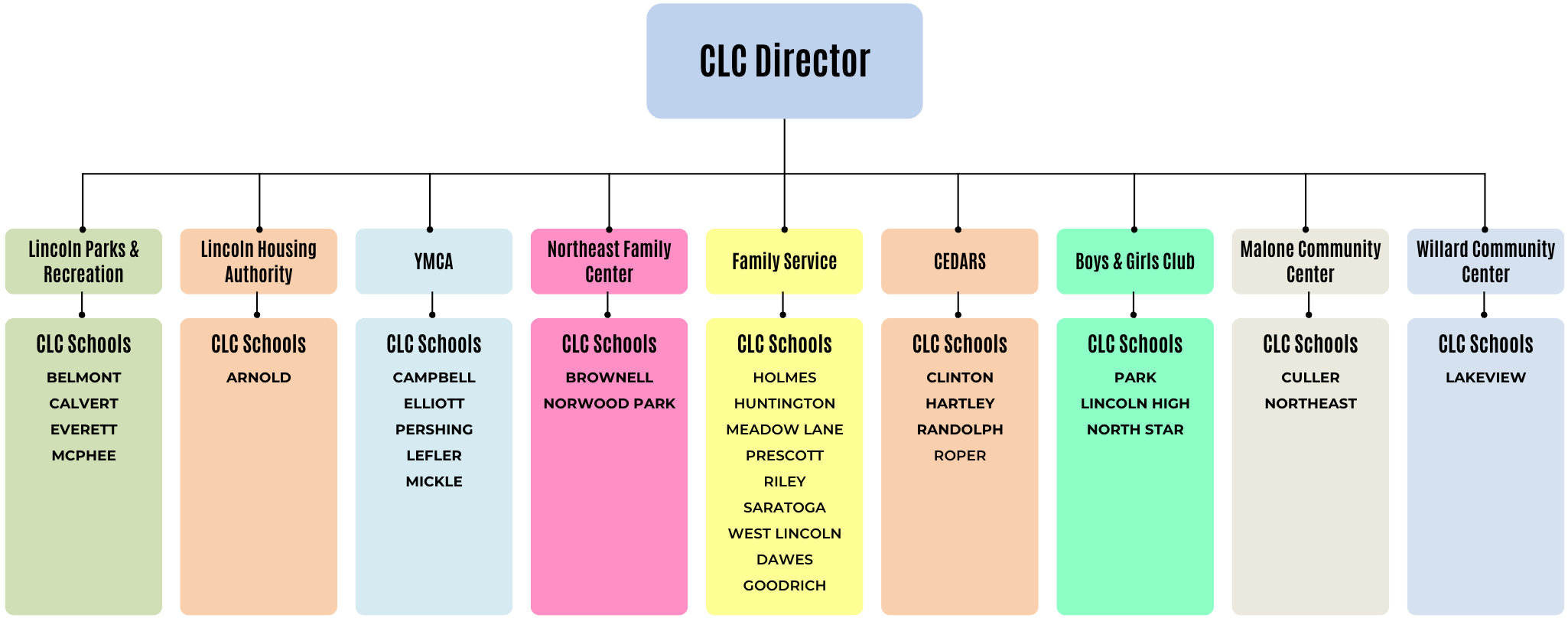Leadership Structure
Successful Together
The CLC initiative is grounded in the belief that relationships and collaborations are the cornerstones that create positive system changes. CLC partners also believe that life-long learning is a shared responsibility of our community’s residents. The schools cannot do it alone. Lincoln’s CLC initiative is an innovative approach designed to link the community, neighborhoods, schools, and people of all ages, backgrounds, and walks of life to achieve our stated goals and outcomes. What makes the CLC initiative different is the core value that education is a community-wide responsibility and the emphasis on building capacity within neighborhoods, community-based organizations and other systems to produce sustained improvements and results. The CLC initiative utilizes ten leadership groups to mobilize and support the day-to-day activities at the neighborhood-based community learning centers.
CLC Board
The Lincoln CLC Non-Profit Board is a 12-member board that was created through the Safe and Successful Kids Interlocal Agreement between the Lincoln Public Schools and the City of Lincoln. It is meant to serve as the oversight of the 31 Lincoln Community Learning Centers and provide budget and programs advice to the Safe and Successful Kids Interlocal Board. The Board’s membership includes members from Lincoln Public Schools staff, City of Lincoln staff, and leaders from the Lincoln community. More information on the CLC board is located on the LPS webpage for the Lincoln Community Centers Board.
School Neighborhood Advisory Committee (SNAC)
SNACs include broad representation and active participation from parents, youth, neighborhood residents, educators, community based organizations and service providers. Each CLC site or pair of sites has a SNAC, which is responsible to assist in the planning, communication and oversight for their neighborhood based CLC and its service activity. SNACs must reflect the uniqueness and diversity of each school and its surrounding neighborhood.

